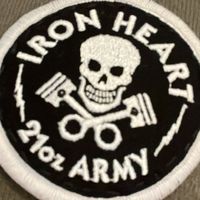Bread - What are you baking today…..
-
Yes, a magnificent disaster. Almost comically bad……
Many issues. Obviously, the oven was at too high a temperature, that is an easy fix. More tricky to determine is why I got so little rise. Could be old yeast, though I have successfully made good Poolish recently (new Yeast has been ordered). I used a new supermarket bread flour, that I have never used before, maybe that was rubbish. I’ll make a Poolish with it when the new yeast arrives to check that it is strong enough. The temperature of the dough was good throughout the process. Empirically, I got a decent change in the dough after the initial bowl fold, but after that I never really saw any strengthening of the dough, and deep-down, knew that putting them in the oven was a waste of energy....
This is my greatest disaster since I used dead yeast a few years back and made 2 bricks…….BUT, I will get it right......
-
to me that looks either underprooved or you've got bad yeast/flour @Giles . The oven temperature looks fine to me, not seeing any excessive scorching, maybe just less time in the oven or lower the temp a good bit in the 2nd half if you prefer a darker crust to avoid the darker patches. The picture of the dough on parchment also appear to show it having underdeveloped structure with how it's kinda spilling around its sides. This could be due to a number of reasons with the flour, too high a hydration for that new flour, or not enough gluten development.
How are you starting the build and at what hydration? Suggest a 1hr autolyse without salt followed by 2 rounds of Rubuad kneading in ~30min intervals then follow by lamination and coil folds.
-
Thank you.
I did exactly as per this:
https://www.kingarthurbaking.com/recipes/pan-de-cristal-recipe
Which is effectively the same as this:
Hydration was the same, and all other ingredients had the same ratios, so I suspect crap flour or old yeast.
-
Not over until it's slathered in butter, or something along those lines. The house is cool today and it's raining outside making for a difficult process. Had to use the oven with the light on trick and the warming drawer to get the temps right. Hoping it proofs well...
We'll see.
-
@neph93 To be honest, I was lucky as hell, used every trick I knew to make this work, and don’t know if I can replicate it. The conditions today were bad: cool house, damp, no real warm spots until I used the oven light and warming drawer.
I’m glad that you guys mentioned the folding technique as I would never have got it right otherwise. I’m still not happy with how my folds looked vs. the ones in the video, but the product turned out well, even with my shortcomings.
As to taste, it’s a lovely bread and will be added to my list of breads to make. Super light, fantastic crust, and will go well with a soft warm cheese (Brie?). Wife loves it and the kids say it’s lighter than a croissant in weight.
The Forkish book and the addition of a proper kitchen scale has changed my skill level dramatically. I was not able to measure accurately using volume and have my results turn out well. Salt, yeast, and flour are always measured with the scale to the recipes recommendation. The water is give or take. The book has taught me that over hydration is not a bad thing and that hydration levels need to take into account your environmental conditions.
Taking all of that into account, it’s still the accidents that make me the most happy with today being one of them. I went into it expecting failure, didn’t know if anything I was doing was right, and the results exceeding my expectations (which were very low).
I hope it’s not a fluke accident, but either way, something that I will continue pursuing.
-
only way to know if it was a fluke is to do it again!
Your bread looks picture perfect to me @goosehd. I found hydration to be extremely forgiving as well. It's not as critical as people say it is unless you're trying to make pan de cristal with pastry flour
 Even then, that might be a fun experiment.....
Even then, that might be a fun experiment.....










